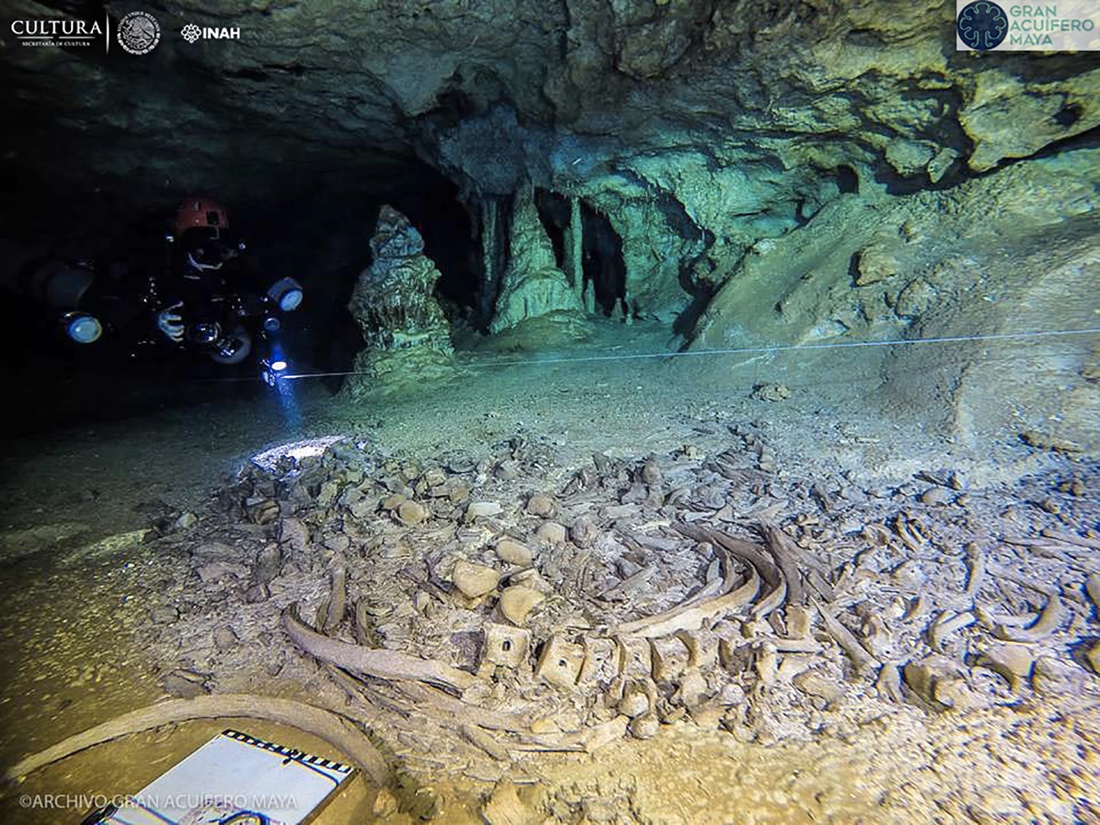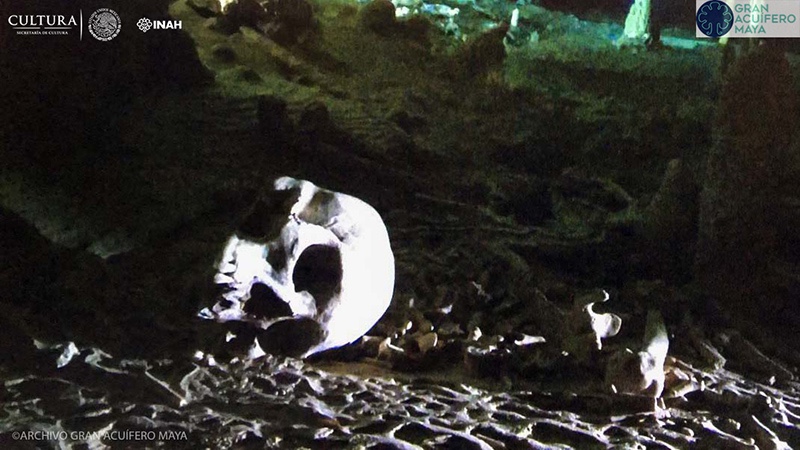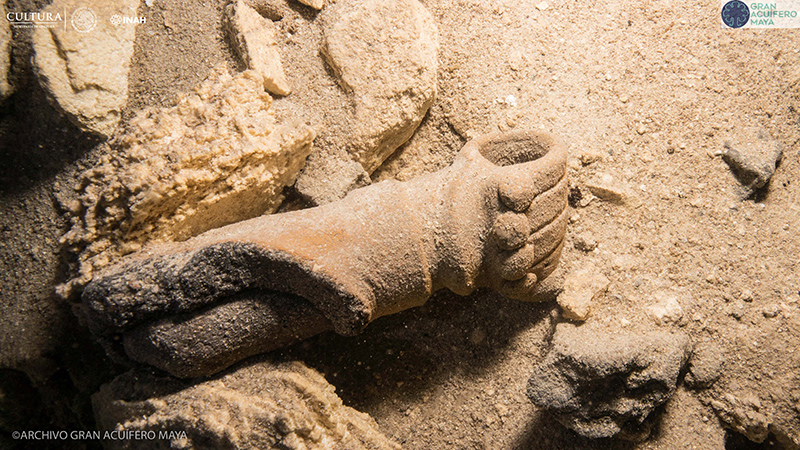Remains of 'Maya Underworld' Found in World's Longest Submerged Cave

In the world of underwater cave exploration, sometimes the biggest discoveries come in very small spaces.
Last month, a diver who was investigating the flooded caverns in Mexico's Yucatán Peninsula near the beach resort of Tulum swam through a tight passageway barely big enough for a person — just a foot and a half (half a meter) high and 3 feet (1 meter) wide. In doing so, he found a long-sought connection point between the Sac Actun cave system and the Dos Ojos system, confirming that the two were actually one. Together, they form the longest underwater cave system in the world, at 216 miles (347 kilometers).
But archaeologist Guillermo de Anda thinks the discovery of the narrow passageway is just the start of stunning findings inside the system now collectively known as Sac Actun. The long expanse of caverns is not only a natural wonder but also a time capsule that stretches back to the last ice age. While exploring the caves, de Anda's team has counted nearly 200 spots with archaeological remains, including Maya altars, ancient human bones and the fossils of extinct animals. They even found the bones of what may be a once-unknown human. [See Photos of the Amazing Underwater Cave System]
"This is probably the most important submerged site in the world, specifically because of the amount of archaeological material, the state of preservation and the big chronology it involves — 15,000 years before our time through colonial times," de Anda told Live Science.
De Anda is a researcher at Mexico's National Institute of Anthropology and History (INAH) and the director of the Great Maya Aquifer project (GAM). The project's lead cave diver, Robert Schmittner, had been exploring the systems for years, but beginning in March 2017, the team made a concerted effort to find the connection between Sac Actun and Dos Ojos.

"If you see the maps that we were following, there were several points where the systems go very close together," sometimes just a few feet apart, de Anda said. In covering such a large area of the underwater labyrinth, the divers inevitably found traces of humans from past centuries.
"We are overwhelmed with the amount of archaeology," de Anda said. "We are starting the documentation and registration of the archaeological sites, but it is going to take years. We know that there's a big potential for research, because preservation in these places is amazing."
Sign up for the Live Science daily newsletter now
Get the world’s most fascinating discoveries delivered straight to your inbox.
De Anda said they will be looking out especially for organic material like wood, cloth and paper that might disintegrate on land but remain intact in the crystal-blue freshwater inside the caverns.
"The only textiles that have been recovered in good shape from the Maya came from the sacred cenote [sinkhole] in Chichen Itza," de Anda said, adding that the dry areas of some of the caves also have conditions that could promote preservation of items as fragile as Maya codexes, of which frustratingly few have been found. [In Photos: Hidden Maya Civilization]
"If we're going to find something very important, something very symbolic, something very ritualistic, it is going to be in a cave," de Anda said. He explained that the Maya universe was divided into sky, earth and the underworld. Caves and watery cenotes (or sinkholes) were thought to be portals to the underworld, and the Maya even believed that human beings were created in these spaces. Among the objects the divers found are altars and incense burners depicting the Maya god of commerce, Ek Chuah.

While the majority of the archaeological material spotted in the cave system so far is Maya, the researchers have also found relics of a much earlier era. During the last ice age, water levels were at least 330 feet (100 m) lower than they are today, and the caves were not always flooded. Water creeping into the Sac Actun system over time preserved the bones of extinct animals like the giant sloth and the gonferterio, ancestors of the elephant.
Perhaps the most famous site in the Sac Actun system is Hoyo Negro, the cenote where the 13,000-year-old remains of a teenage girl dubbed Naia were found. Another group of researchers recently reported that they found the remains of 42 Late Pleistocene animals from 13 different species at the site. Hoyo Negro is "a fantastic site for sure," de Anda said, though he added that it had been lacking context within the larger cave system.
"Now, we can know what is the relative distance between one discovery and the other, and we can try to reconstruct the activity of animals and humans and how they are behaving," de Anda said. He added that his team also found at least one set of human remains that was not known before.
With tourism and development growing in the region, the pristine caves face threats of human disturbance, from pollution to looting, de Anda said. At the Chan Hol cenote, part of another cave system in the Mexican state of Quintana Roo, scientists recently reported that they found what could be one of the oldest human skeletons in the Americas. But they were working with an incomplete data set; most of the human remains at the site had been stolen shortly after their discovery in 2012.
De Anda and his team are now advocating for greater protections at the Sac Actun, by proposing measures such as a UNESCO World Heritage Site status. They think that confirming the system's impressive size is an important first step in protecting and understanding the caves.
"In order to protect something, in order to start a serious scientific process, you need to know how your universe works," de Anda said.
Original article on Live Science.










